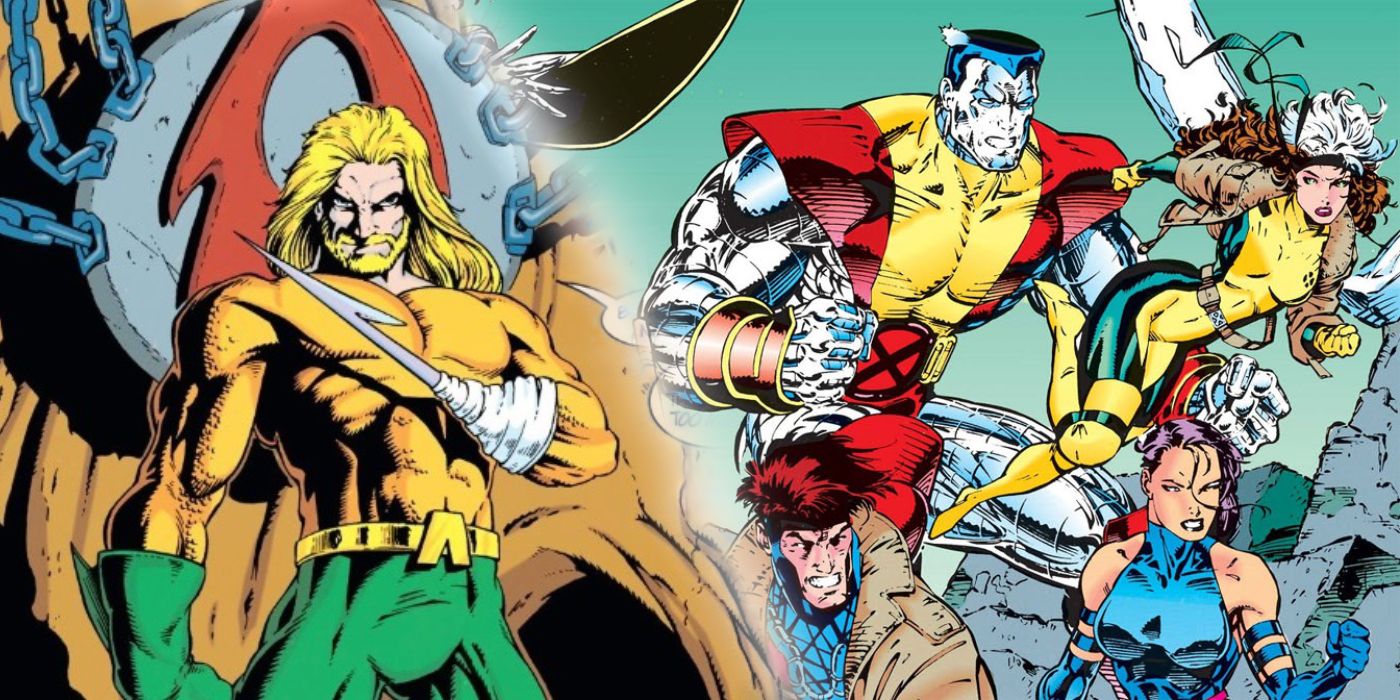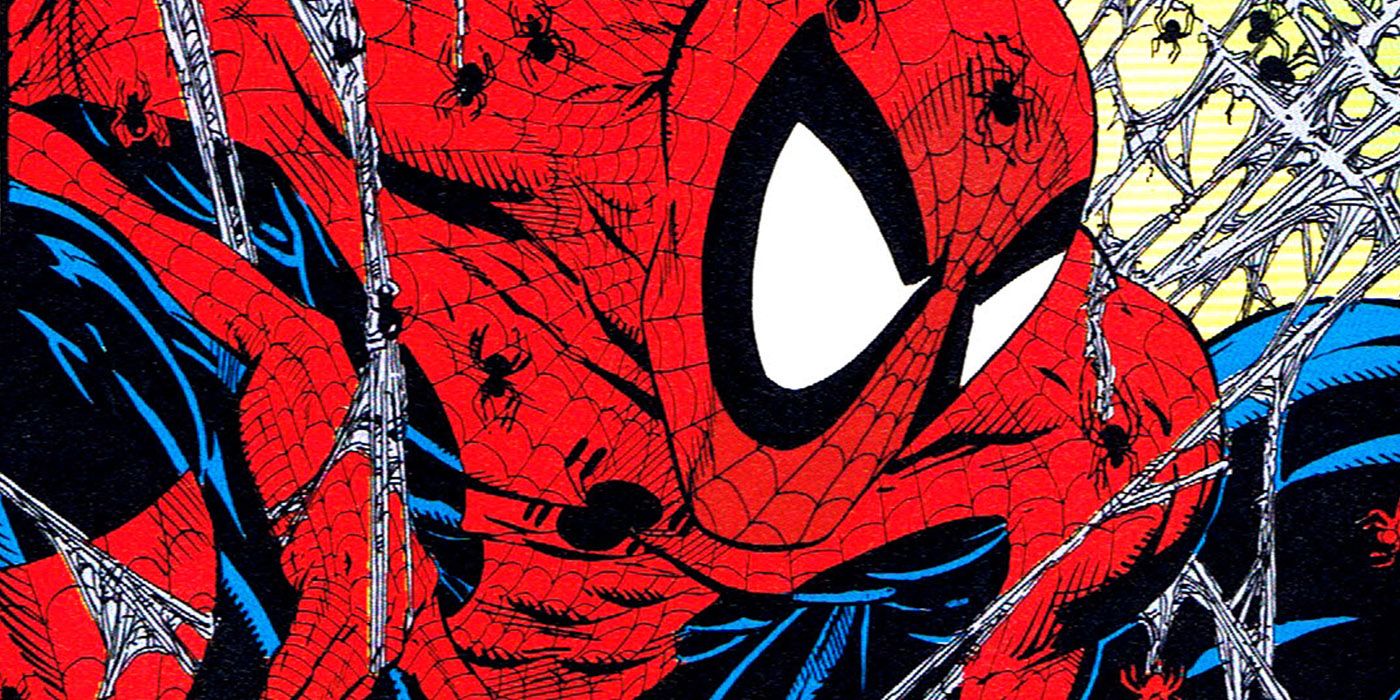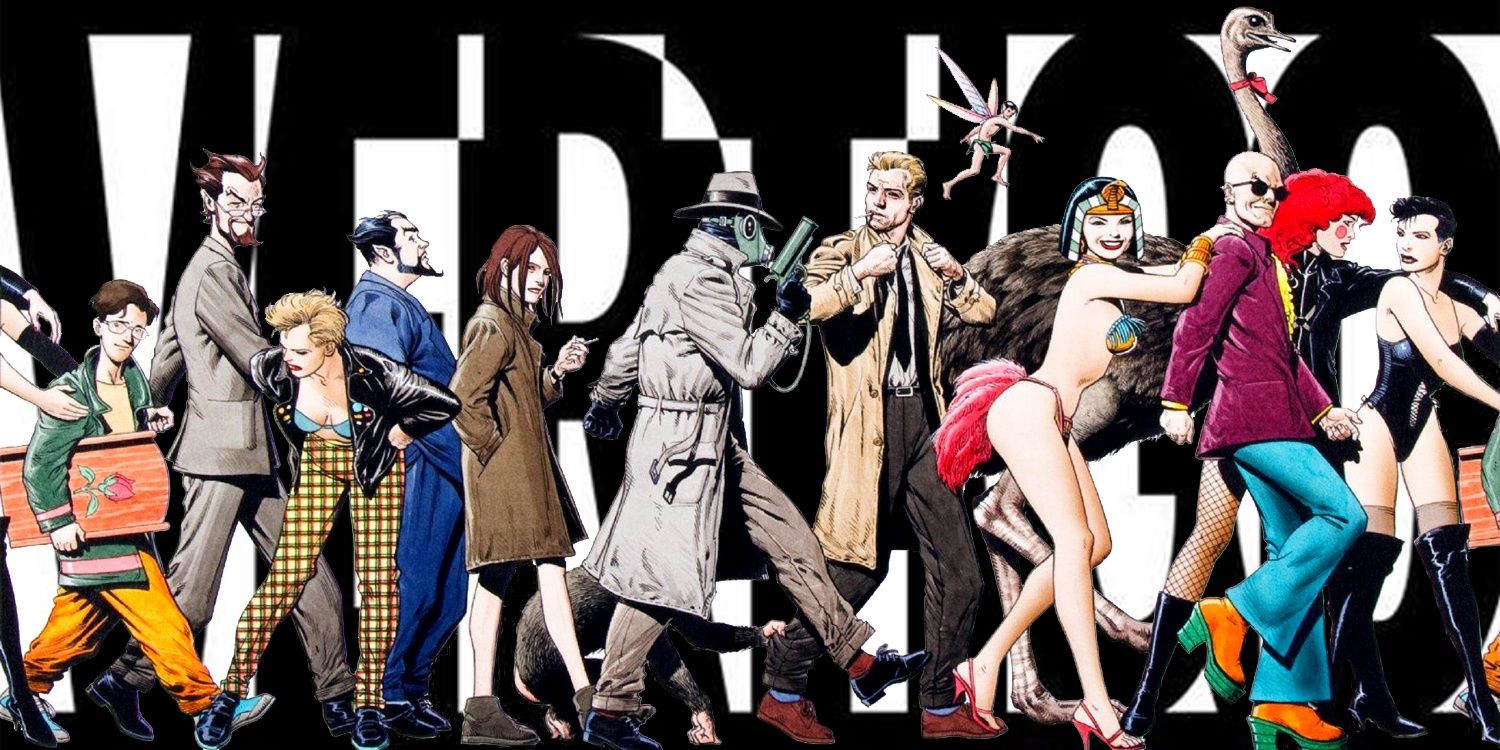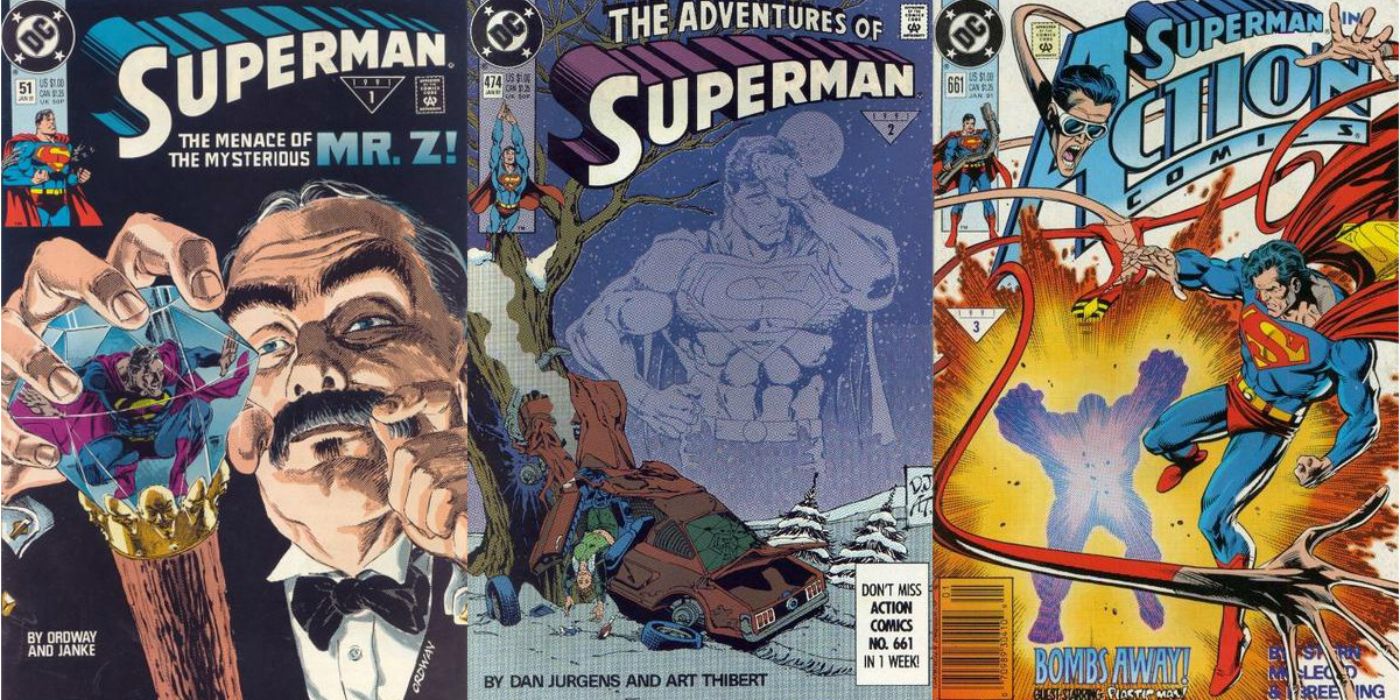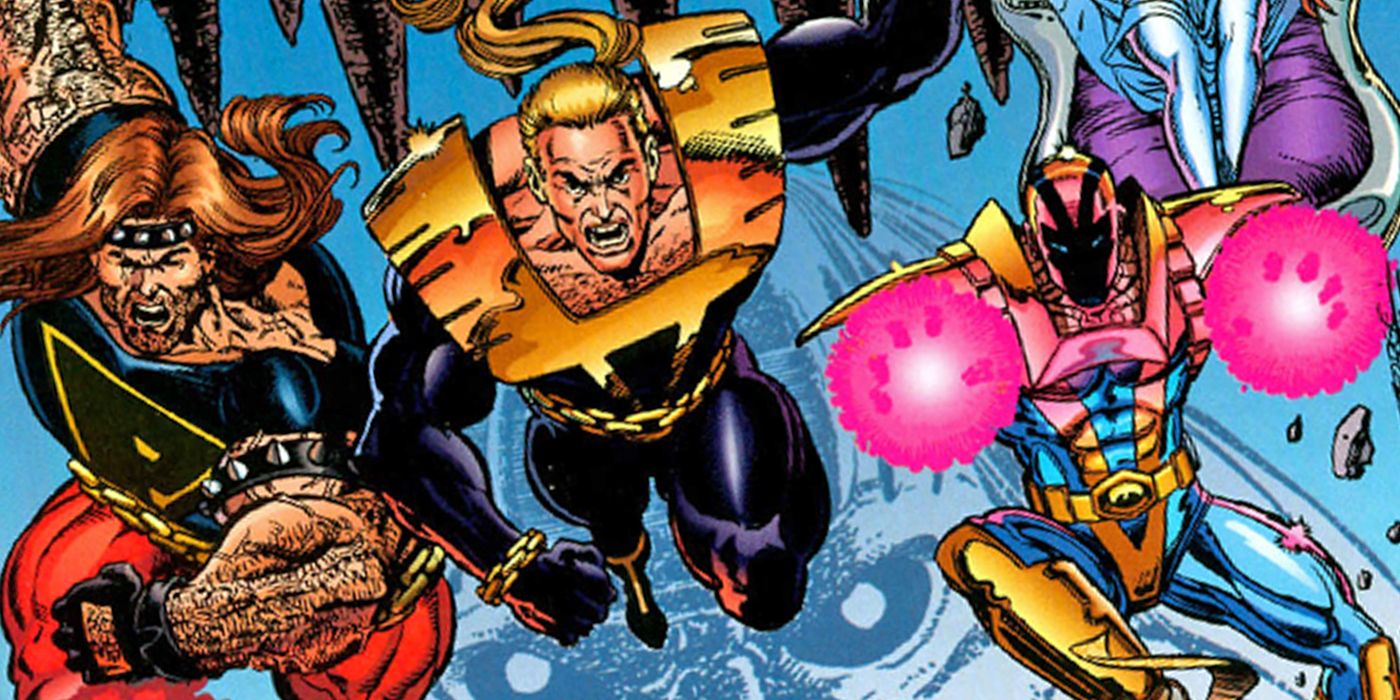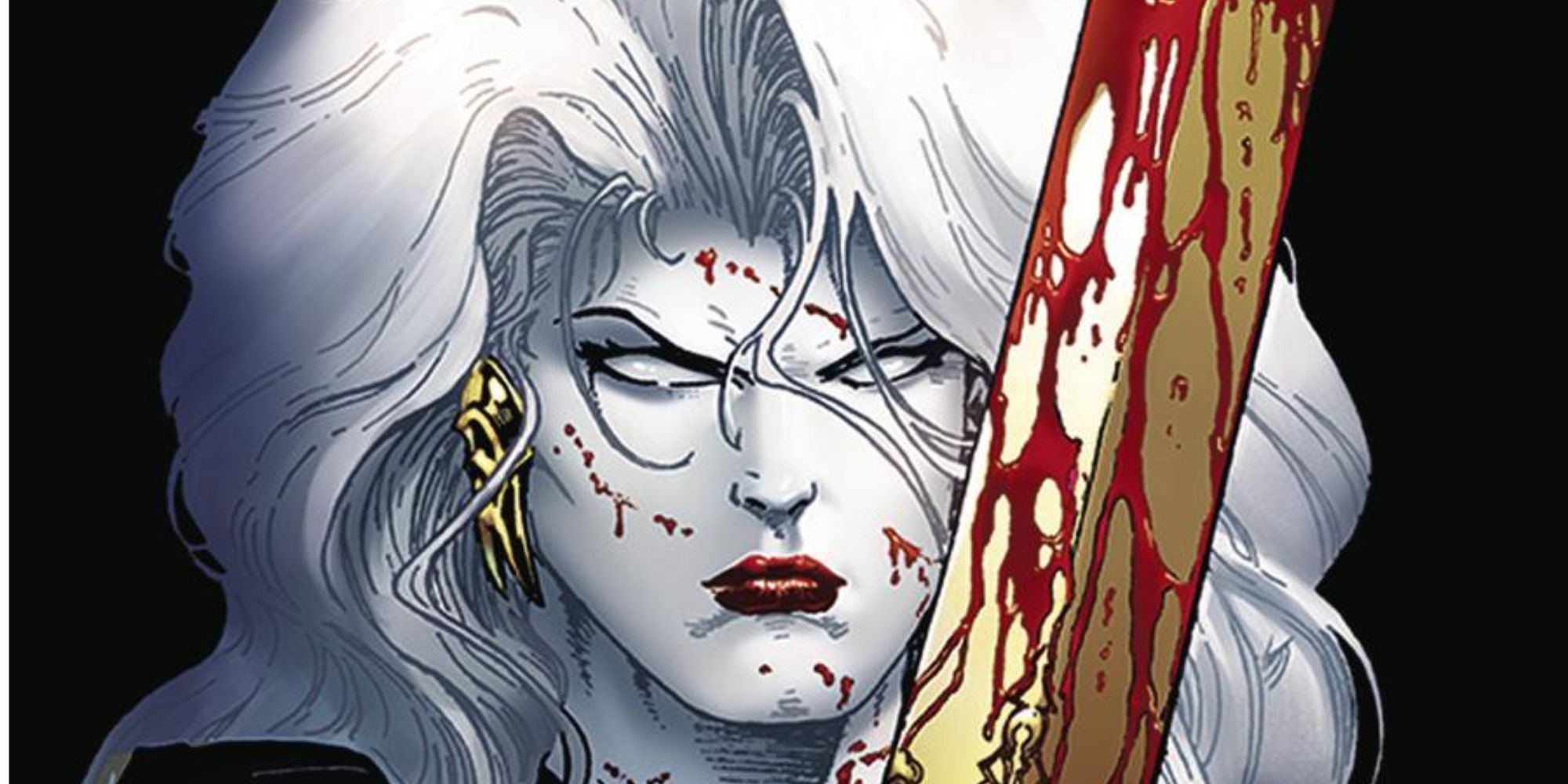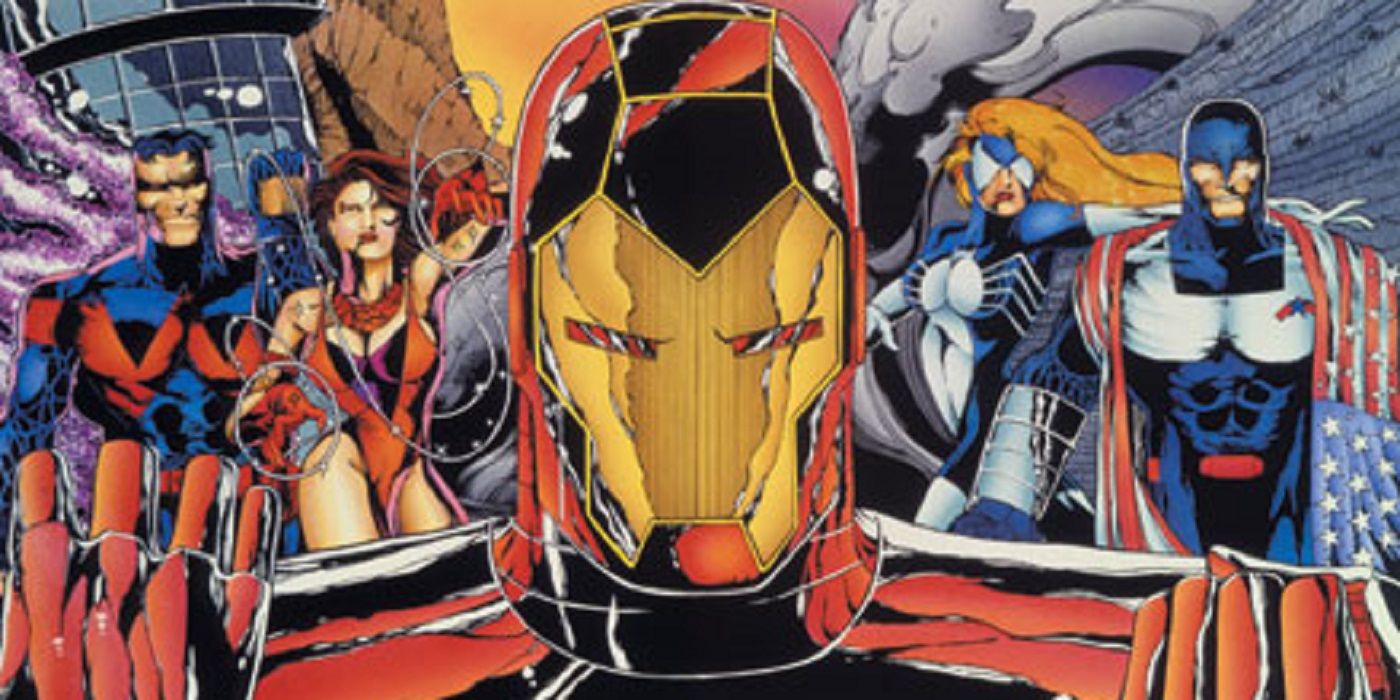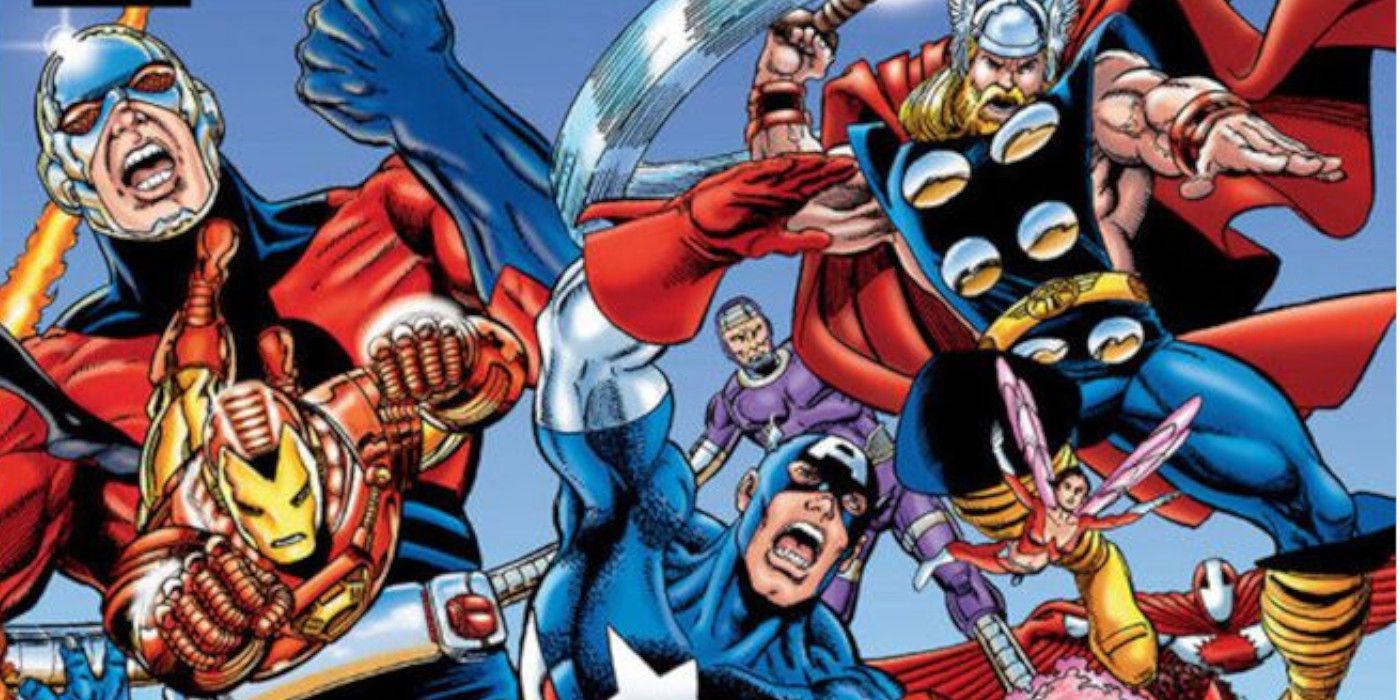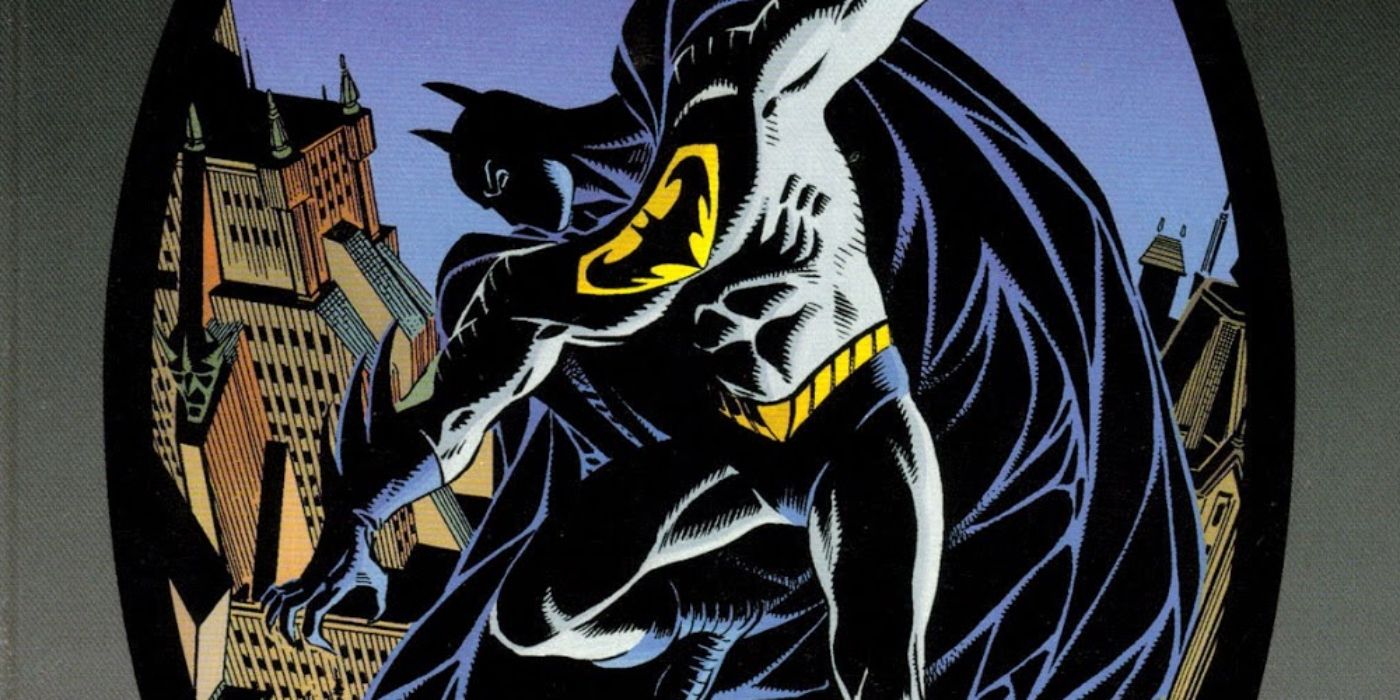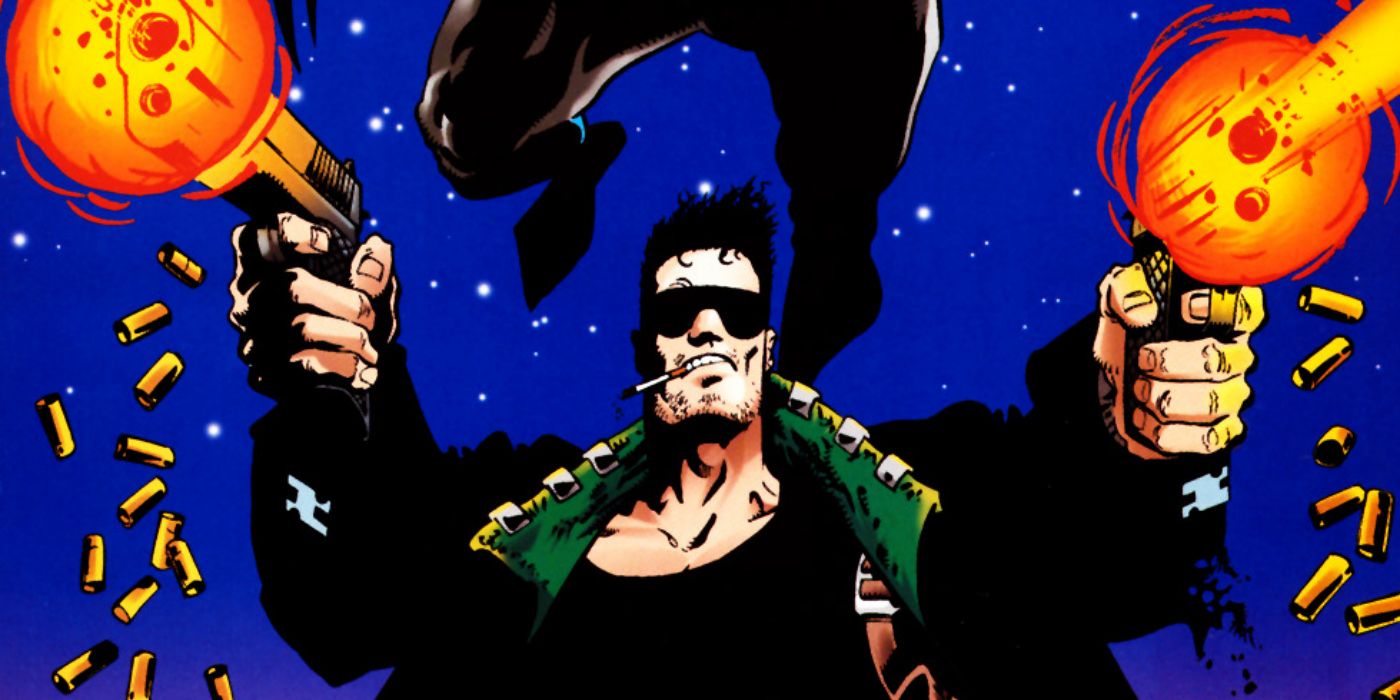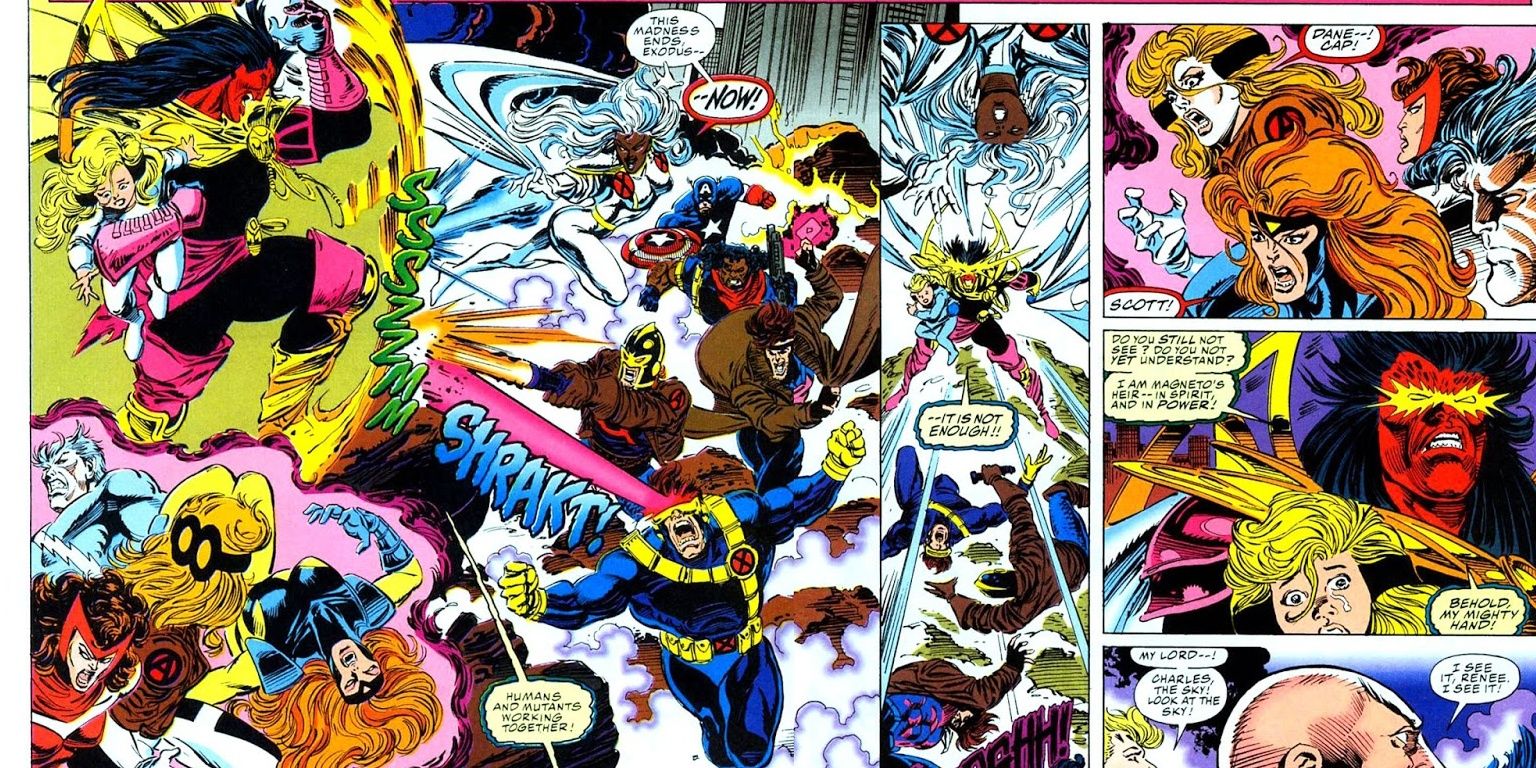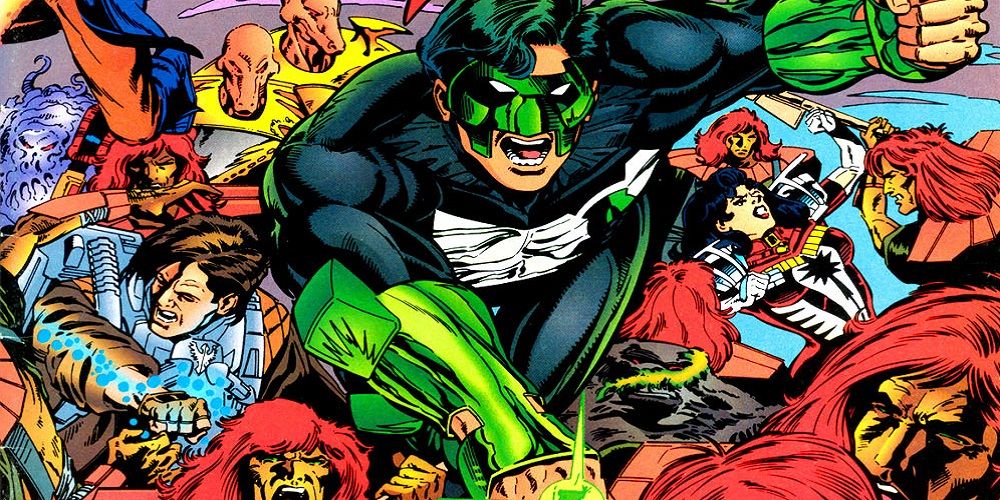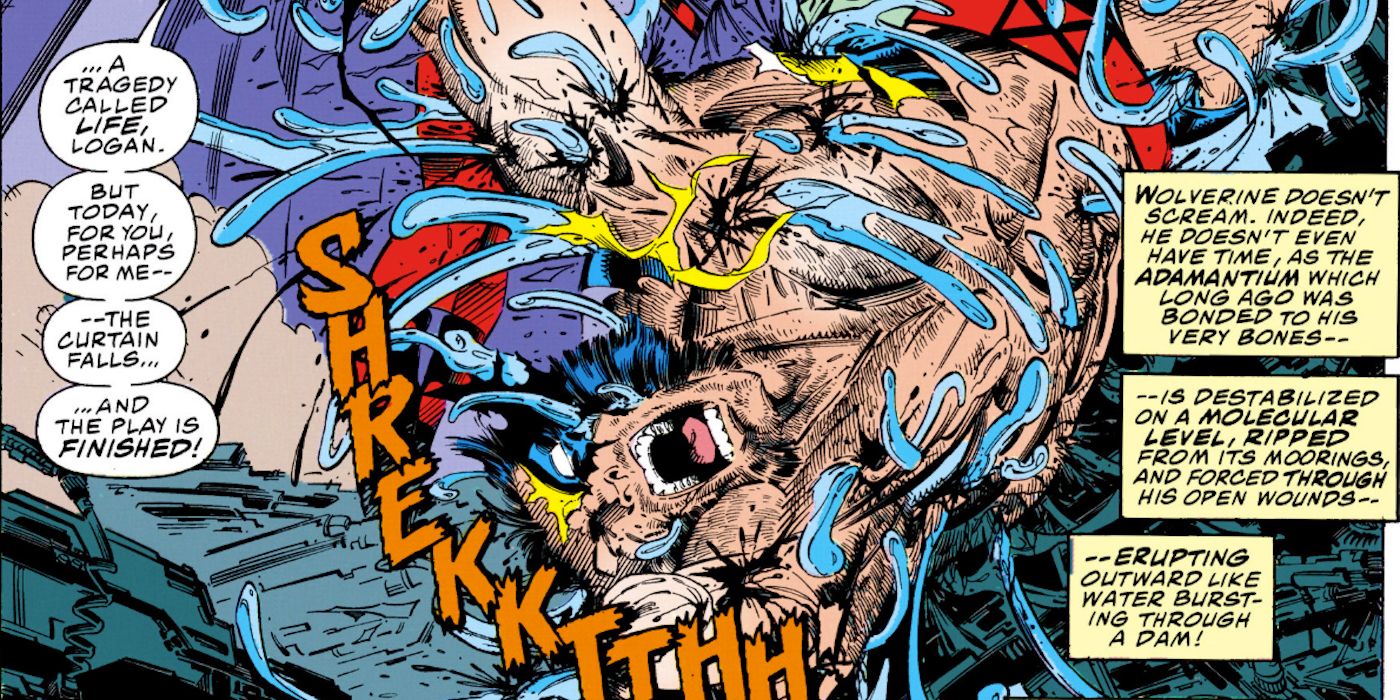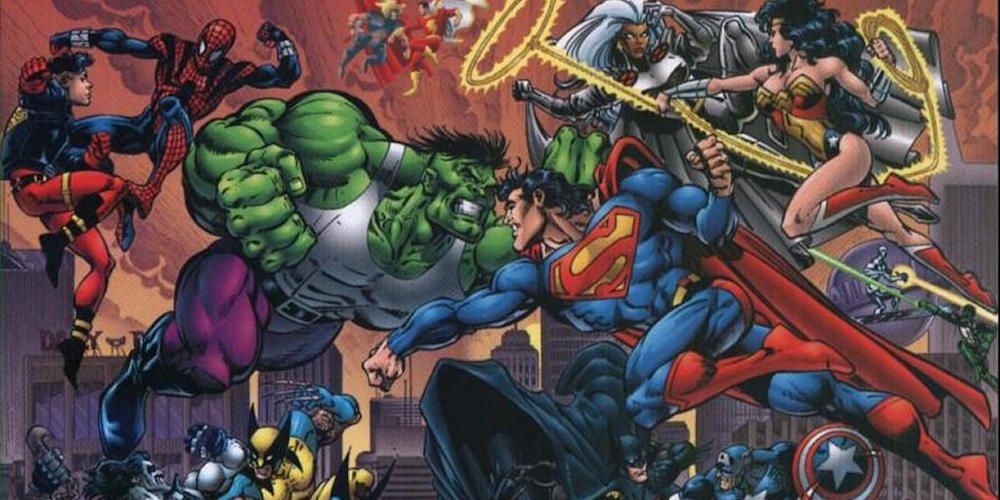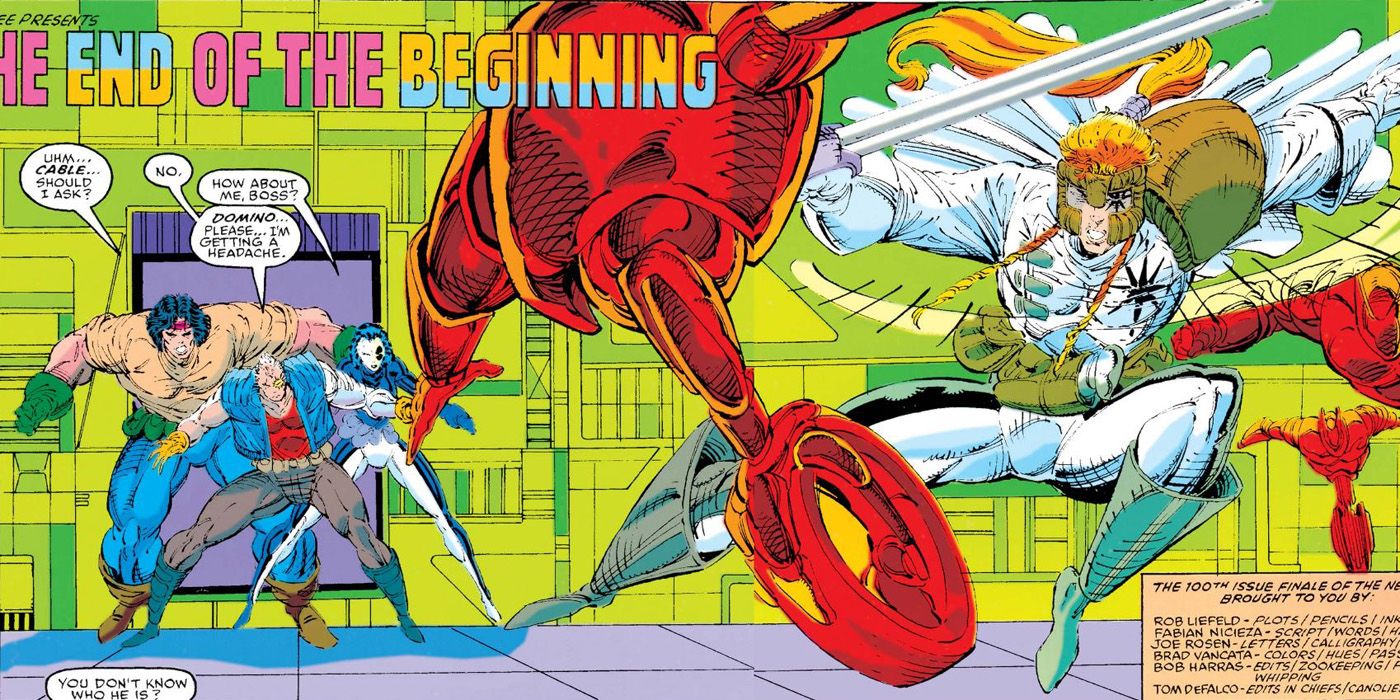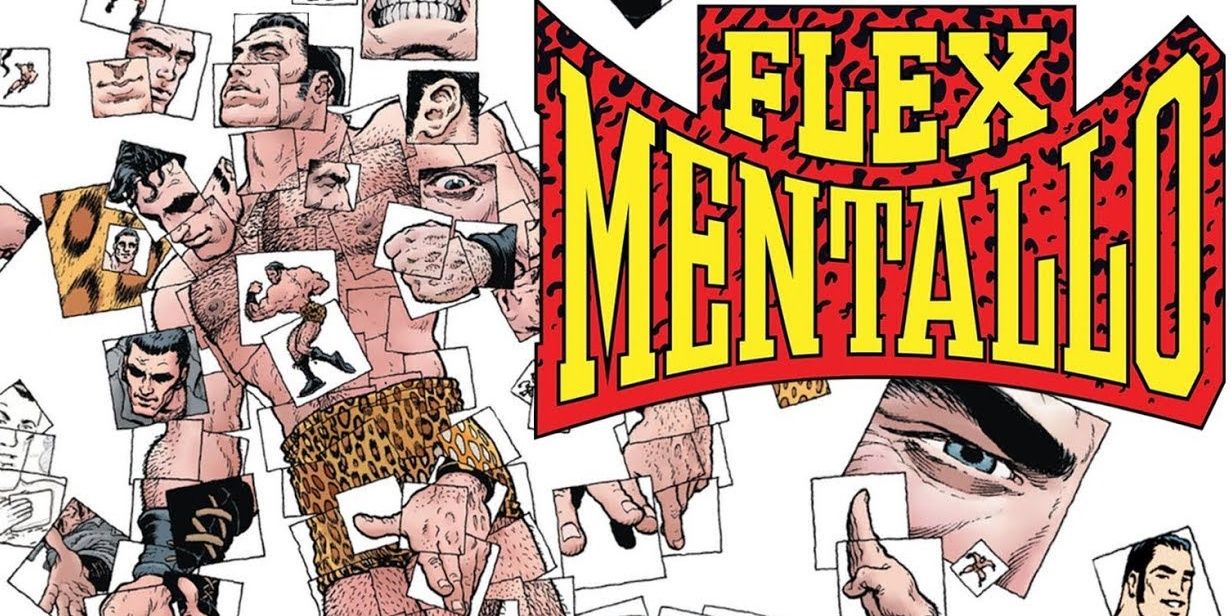The '90s were an interesting time in comic history. Marvel spent the decade trying to replace the lost Image Comics founders and chasing trends instead of setting them. DC reshuffled its biggest icons while building one of the deepest writing benches in comic book history. Meanwhile, the indie market went in many different directions, some regrettable and some remarkable.
There are some tropes of '90s comics that fans look back upon and chuckle at. At worst, they wince in disbelief at some of the things that were popular back then. However, there are some trends from the decade that should definitely make a comeback.
Updated December 21st, 2022 by David Harth: The '90s were a wildly creative time for the comic industry, for good and for ill. Many of the best creators ever were working on books that changed the way readers looked at comics. The decade was full of tropes that could be used today to grow the industry again, leading to a creative renaissance of epic proportions.
15 Artists Were Given A Bigger Chance To Write Books
Artists had massive power in the '90s, as the Image founders proved. Before their exodus from Marvel, the company realized this and gave them greater power than ever, allowing them to both write and draw. Todd McFarlane had Spider-Man, Jim Lee was co-writing X-Men and Uncanny X-Men, and Rob Liefeld was co-writing New Mutants and then X-Force.
Once Image was established, many artists took a stab at writing and art. While they weren't all winners, it gave artists more recognition for what they contributed. While there are some writer/artists working in the industry currently, there could easily be more.
14 The Big Two Used Imprints To Tell Stories That Were Out Of The Ordinary
DC's Black Label has some excellent comics, but it doesn't have anything on '90s Vertigo. While it's the most well-known, Vertigo wasn't the only comic imprint that existed back then. For example, Marvel had the Epic line for more indie-minded, creator-owned works that began in the '80s and ended in the '90s, and the Razorline, a horror imprint that Clive Barker curated and the Wachowskis worked on.
On top of Vertigo, DC also had Helix and Paradox Press. Even indies got in on the fun, with Dark Horse having several different imprints and Image's studio system working in a similar manner. These imprints gave readers a choice within each company, something that fans don't really get today unless they buy only indie books.
13 The Biggest Characters Got Multiple Ongoing Books
Nowadays, Batman has multiple miniseries and one-shots per month, but only two ongoings. Superman has two ongoings. Spider-Man has multiple minis but only The Amazing Spider-Man as an ongoing. In the '90s, each of these characters had four ongoings, which allowed creators to do multiple stories per month of all different kinds.
The dominant paradigm seems to be fewer ongoings and more minis for the biggest characters, but the '90s model could easily be brought back. There can be an anthology book, one that would act like the miniseries do, a book with one-and-done stories to take the place of one-shots, and the long-running books that are the main ongoings today.
12 Superheroes Weren't The Exclusive Property Of The Big Two
Nowadays, when people think of superheroes, they think of Marvel and DC. Only a few indie superheroes, mostly from Image or Valiant, manage to escape this market dominance. However, the '90s gave readers many great heroes who weren't from Marvel or DC, several of whom are still being published to this day.
The '90s had superheroes from Valiant and Image, but also from Dark Horse, Malibu, and many other companies. Superheroes began to take on roles that they hadn't before, and Marvel and DC had to change their offerings to keep pace. It would be great if that sort of thing happened today more often, as there are many superhero stories that don't get told at the Big Two.
11 The Bad Girls Trend Saw Many Female-Fronted Books Put Out
Right now, female representation at the Big Two isn't what it should be. DC feels like it's only putting out Batman books. Marvel is doing a little better, except it keeps most of its women in team books and miniseries, with many Marvel women being badly written. However, there was a '90s trope that, with a little modification, could fix things.
In the '90s, the Bad Girls trend saw books starring usually scantily-clad women fighting evil of all kinds. While it was a little sexist, it definitely doesn't have to be, as the core was just strong female characters kicking butt. A return to this trope, with more women creators in charge and less sexism, could rocket female superhero representation to the stars like never before.
10 Secondary Groups Of Iconic Teams Are Actually Good
While the X-Men have always had a thousand different secondary groups, it's not as common for other teams. The '90s made the argument that maybe it should be. The Avengers had the Avengers West Coast, itself actually an '80s relaunch, and Force Works. The Fantastic Four had Fantastic Force. The Justice League had the Justice League Europe, Justice League America, and Extreme Justice, and there were two Legion teams.
While a lot of these are bad teams from bad comics, that doesn't mean secondary teams aren't great when done right. Marvel and DC have tried to bring this trend back, often failing in execution, but they should keep trying until they get it right.
9 Back To Basics Storytelling Saved The Biggest Teams In Comics
The '90s were a time of X-Men supremacy, but every other team suffered at some point in the decade. The Justice League, Avengers, Fantastic Four, Legion of Superheroes, Teen Titans, and Justice Society all had sales problems, and all of them were solved in the same way: by hiring great talent and going back to basics.
Morrison and Porter on JLA, Busiek and Pérez on Avengers, Abnett, Lanning, and the Bierbaums writing the Legion books with Sprouse and Immonen on art all used classic tropes with modern sensibilities. Likewise, David and Nauck remixed the Teen Titans into Young Justice and Robinson, Goyer, and Sadowski were on JSA. They all took their teams back to basics, and it paid off.
8 Alternate Universe Stories Were All The Rage
One can argue that the multiverse concept is currently at its highest saturation point in pop culture, but comics aren't using them like they did in the '90s. Both Marvel and DC had regular alternate story vehicles, with What If... for Marvel and the Elseworlds line for DC.
Each one told one-and-done alternate universe stories that were compelling and imaginative. Add to that The Age Of Apocalypse, and the '90s were a golden age of alternate universe storytelling. Readers gladly went into these other universes and followed amazing stories that, unfortunately, aren't getting told anymore.
7 New Characters Were Constantly Being Created
The superhero universes of the '90s were constantly being expanded upon. Marvel and DC were debuting new characters on a nearly monthly basis, especially X-Men characters, and the indies were on fire with creativity. While many were just gimmicks, some of these characters were able to rise above the herd and become fan favorites.
Nowadays, new characters are few and far between, with creators saving them for work they own. This lack of creativity has hurt the Big Two the most, as fans keep getting the same characters over and over again.
6 Team-Ups And Crossovers Weren't Epic Affairs
In the '90s, Batman, Spider-Man, and Wolverine teamed up with everyone. However, most of the time, these team-ups were single-issue affairs, with longer crossovers being a rarity. Even when the X-Men teamed up with the Avengers in "Bloodties," it was only a two-issue crossover. Not every team-up and crossover was a multi-month event in the '90s.
These short team-ups and crossovers made the universes feel more realistic. They also didn't derail the storytelling in the main books. While they sometimes made people tired of certain characters, short team-ups and crossovers are still a smart way to go, especially if they aren't always with the same few popular characters.
5 Replacing Icons Created Great New Stories
DC was all about change in the '90s, with many of its biggest icons sitting out for periods of time. Superman was replaced by four new characters, Batman was replaced by Azrael, and Wonder Woman by Artemis. Green Arrow was Conner Hawke, and Kyle Rayner took over as Green Lantern, creating amazing stories.
These changes revitalized the DC Universe, allowing readers to see icons in a new light. It created characters that would become beloved by fans and made them realize that sometimes, a mantle could work with a different character in it just as well as the originals.
4 Breaking The Big Names Paid Off
In order for the big-name heroes to be replaced, they had to be broken. Superman was killed, Batman had his back broken, Wolverine's adamantium was pulled out, and Hal Jordan fell to evil and was defeated. In the '90s, no one was untouchable. While it didn't always work as well as planned, it led to some interesting places.
Modern characters often feel like perfect little nuggets of IP; breaking them is verboten. However, a little '90s-style treatment for the biggest characters would do them well. It added a sense of unpredictability to the stories and resulted in status quo changes that paid off.
3 Company Crossovers Were The Name Of The Day
Being a fan of both Marvel and DC isn't easy nowadays, especially because the possibility of new crossovers between the two publishers is nonexistent. This wasn't the case in the '90s. Not only did Marvel and DC cross over many notable times, but both companies crossed over with various indie companies. Crossovers were even more common among indie companies.
Fans got to see their favorite characters from multiple universes crossover all the time. It was very common in the '90s to get company crossovers, something that won't happen today outside of indie books like Crossover.
2 Everyone Had Swords, And It Was Super Cool
The '90s was an era of superheroes with weapons. While the giant guns of the day were pretty ridiculous, characters with swords were awesome. There's something about a character with a sword; anyone can shoot a gun, but swords take work to master. A hero or villain with a sword says something better about the character than if they had a gun.
It could be katanas, broadswords, energy swords, or the like, but swords were an important part of superhero comics back in the '90s. They're still a part of comics, but they can be a bigger part, because swords never go out of style.
1 The Big Two Weren't Afraid To Get Weird
The '90s were a time of wild experimentation. It all began in the '80s when DC pushed the boundaries of the medium with comics like Swamp Thing, The Sandman, Animal Man, and more. This came to fruition in the '90s, as creators from the UK and the US alike pushed the bounds even farther.
Grant Morrison's legend was hatched during this time as the foremost purveyor of superhero strangeness, but the industry was alive with experimentation. DC and Marvel went in strange directions with their comics, willing to bend the superhero genre into bold new shapes in ways that fans haven't seen since.

